
'Why We're all Made out of Stardust from Starstuff '
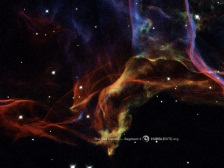
Universe expert ... Professor Brian Cox
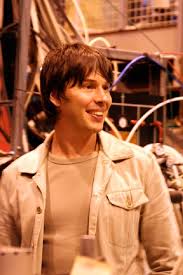
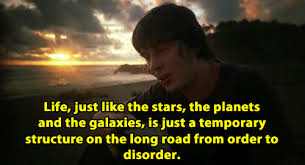
Brian's Wonders of the Universe
SUN Professor Brian Cox takes us on a trip through the universe, exploring topic of time
By BRIAN COX, Sun Professor
Published: 22 Feb 2011
THE transform of us into a nation of skygazers – now Sun Professor Brian Cox is taking us a step beyond. Following his hit show Wonders Of The Solar System, the TV boffin is back to tackle even bigger topics in new BBC2 series Wonders Of The Universe, starting March 6 at 9pm.
Today, as part of a tour through space all this week in The Sun, Brian takes a look at matter. YOU and every human being on the planet are made out of around 60 basic building blocks, assembled in millions of different ways.
Most of your body is built out of five of them — oxygen, carbon, hydrogen, nitrogen and calcium. Others, like phosphorous, potassium, sulphur, sodium and chlorine, occur in very small quantities but are vital for life. These building blocks are known as the chemical elements.
They stick together to form familiar substances. Hydrogen and oxygen bind to form water, sodium and chlorine make salt, and so on. But, surprisingly, when the universe began almost 14,000million years ago, only two of the basic elements existed, hydrogen and helium. There was no oxygen or carbon and therefore no possibility of life anywhere in the cosmos.
So where did the building blocks of planets, cities, televisions, newspapers and human beings come from? The answer is that they were assembled in the hearts of long-dead stars.
Most of the stars in the sky, including our sun, shine by turning hydrogen into helium. This process releases vast amounts of energy.
The sun converts 600million tonnes of hydrogen into helium every second. That is a million times more energy than the United States uses in a year.
This process can’t last forever because, while the sun is so vast that you could fit a million Earths inside, 600million tonnes is a lot of hydrogen. Eventually, the sun will run out of fuel and begin to collapse under its own immense gravity.
There is no need to worry about it at the moment, because it has enough hydrogen in its core to shine for at least another 5,000million years. But eventually, the sun will die.
Shedding light on the matter ... stars of Orion
Photo Network
It is in the process of dying that the stars produce the other chemical elements. As a dying star begins to collapse, its core heats up to unimaginable temperatures.
The temperature at the Heart of our sun is currently around 15million degrees Celsius, but when it begins to collapse its temperature will rise to more than 100million degrees.
When this happens, the helium in its core will begin to fuse together to form beryllium, oxygen and carbon. This is the origin of all the carbon and oxygen in the universe.
Some stars stop there but the most massive stars continue, sticking oxygen and carbon together to make all the chemical elements up to iron. We know this because we can see it happening in the sky today. Next time the sky is clear, have a look for the constellation of Orion.
If you look carefully, you’ll see that the star at the top left-hand corner glows a pale red colour. This star is called Betelgeuse (often pronounced “beetle-juice”), and it is frantically building heavier elements in a last desperate battle against gravity.
In the process, it has swollen into a true giant. If you put Betelgeuse in the same position as the Sun in our solar system, it would completely engulf all the planets out to Jupiter.
Eventually, even stars as enormous as Betelgeuse must run out of their nuclear fuel and then gravity will take over once more, forcing the star to collapse catastrophically.
For these most massive of stars, the final collapse gives rise to one of the rarest and most spectacular sights in the universe — a supernova explosion. Red-y to explode ... dying star Betelgeuse
A thousand years ago, a great civilization existed in Chaco Canyon, New Mexico. The Chacoans were avid stargazers and built vast 700-room mansions aligned with the sun, moon and stars.
On the night of July 4, 1054AD, the Chacoan astronomers saw for themselves what happens when a star like Betelgeuse finally loses its fight against gravity.
A new star appeared in the clear, dark skies of New Mexico, shining as brightly as the moon for several weeks before gradually fading from view.
We now know they had witnessed a supernova explosion that happened 6,000 light years from Earth — relatively close by cosmic standards.
In a single instant, the dying star emitted more energy than our sun will emit in its entire lifetime, casting shadows on the distant Earth.
The Chacoans documented the explosion in a painting that still exists on an overhanging ledge in the canyon. It depicts the crescent moon, a handprint pointing to the place in the sky where the supernova happened, and a brightly glowing new star beside the moon.
We know so much about this explosion because we can still see its remains today. In the place in the sky where the star once shone, there is now a brightly coloured cloud of interstellar gas known as the Crab Nebula.
This cloud is filled with the chemical elements that the star produced in its lifetime, including the carbon, oxygen and iron vital for life.
But there is an extra and wonderful twist to this story of the origin of the building blocks of people. The assembly of the heavier elements in the cores of stars stops with iron, element No26.
Stargazers ... ancient cliff painting of supernova in New Mexico Kevin White Stars cannot in the normal course of their lives build anything heavier than iron because this process does not release energy and does not help the star in its fight against gravity.
If you are wearing a wedding ring or gold jewelry, look at it now. Gold is heavier than iron, so it is not made in the hearts of stars.
So where did it come from? The answer is that gold is made in the last seconds in the lives of the most massive stars in the universe, the supernova explosions.
Gold is so rare because the conditions needed to make it are rare. On average, in a galaxy of a 100,000million stars, there will only be one supernova explosion per century, and the explosion itself is only hot enough to make gold for about a minute.
That is why gold is so valuable. Throughout the whole of human history, we have only discovered enough gold on Earth to fill three Olympic-sized swimming pools.
The story of the origin of the chemical building blocks of human beings is magical and humbling. Our ingredients were cooked in the hearts of ancient suns, thrown out into the universe in their deaths and eventually brought back together to form our solar system by the relentless pull of gravity.
The elements we hold most precious were forged at the moment of these magnificent stellar deaths. In the universe, new life is born from the ashes of old. We are part of a vast cycle of cosmic death and rebirth. And when we die, the elements that make up our bodies will be returned to the universe to begin the cycle again. What a wonderful thing to be part of this universe, What a majestic story.
Brian Cox argues that there is a “special status to scientific knowledge” and that it is a necessary framework within which we can discuss wider questions of existence. Take inflationary cosmology. “There may have been more than one Big Bang and probably, in these theories, there are an infinite number of universes being created all the time. So what does that mean? What does it mean that our existence is inevitable, that the universe may have been around forever?”
26
He hasn’t got the answers but He wants a debate. “These things have not been discussed widely; they need novelists and artists and philosophers and theologians and physicists to discuss them.”
When I ask Him how God fits into his understanding of the universe, Prof Cox says: “It doesn’t at all. I honestly don’t think about religion until someone asks me about it.” And that’s because, he explains, science is not about asking grand questions but very simple ones. The way to find out answers to big questions is “almost accidentally”.
Using physics that is beyond me, Prof Cox explains how his fridge shows that there is no afterlife (thermodynamics, apparently). But then He qualifies himself. “Philosophers would rightly point out that physicists making bland and sweeping statements are naive. There is naivety in just saying there’s no God; it’s b------s,” He says. “People have thought about this. People like Leibniz and Kant. They’re not idiots. So you’ve got to at least address that.”
I can dig and or understand Brian Cox's philosophical views of the universe and that's not going to change my views of liking him as a Scholar - Particularly with his tv Series of "Wonders of the Solar System" ... In fact, he is my closest replacement for Carl Sagan's Teachings of the "Cosmos" Except for His further understanding, (On atheism, Sagan commented in 1981 an atheist is someone who is certain that God does not exist, someone who has compelling evidence against the existence of God ... I know of no such compelling evidence) Similar to what Albert Einstein said in one of his quotes - "No one can read the Gospels without feeling the actual presence of Jesus - His personality pulsates in every word" - That doesn't sound like an atheist to me... And I really don't think that Brian Cox is either
I believe in all the logical things that Science teaches me - Therefore I believe in the Scholars of Physics, and the Scientists of Cosmologies teachings, but that doesn't (in any way - take away) my Logical Belief that Science and God are one of the same as being the engineer of it all ... And no one or nothing could convince me otherwise... Sometimes the truth can't set you free "Scientifically" when your Mind is over what truly matters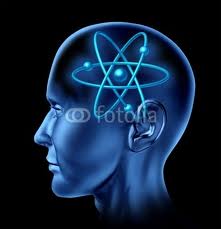 Celestially ... In other words, a Battle of the Wits between Nonsense vs. Common-"Einstein" put it
Celestially ... In other words, a Battle of the Wits between Nonsense vs. Common-"Einstein" put it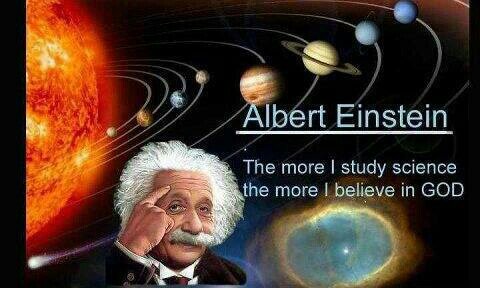 Science with God as one only enforces my logical thinking of God being the engineer of it all.
Science with God as one only enforces my logical thinking of God being the engineer of it all.
Just as God conceived them from the very beginning, Miracles will continue to happen day by day done His way without the explanation of Science behind them - until He ceases to Hallow them … Anyone who has a Good Heart will sooner or later come to the realization that  And I’m pretty sure that "Brian Cox" will be one of them ...
And I’m pretty sure that "Brian Cox" will be one of them ...  ...
...
'Why We're all Made out of Stardust from Starstuff ',
From Scientifically into Celestially ... The Answer is Simple and Wondrously Biblical,
Genesis 2:7 King James Bible ...
"And the Lord God Formed Man of the Dust of the Ground,
and Breathed into His Nostrils the Breath of Life; and Man Became a Living Soul",
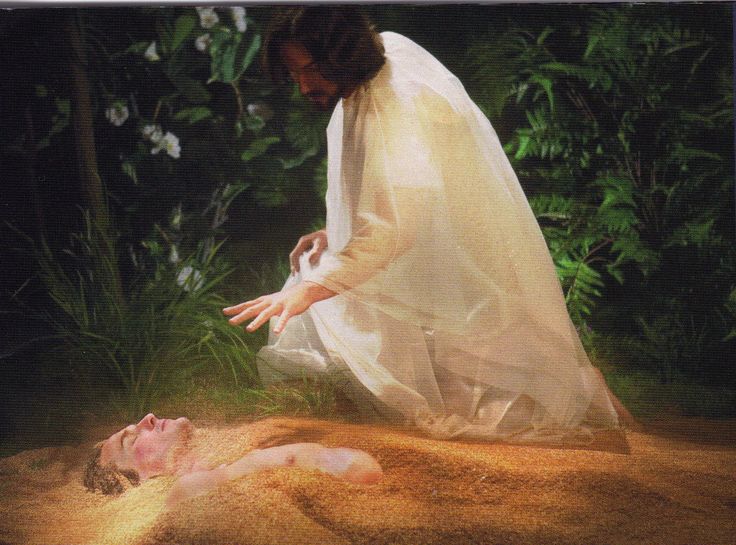
In other words, from the - Eve of the Atom - into Adam and Eve - is whence
We were Conceived ----- from Enough of ----- God's Star Stuff.
Designed and Rewritten intoCelestial Science by,
Don L. Johnson
